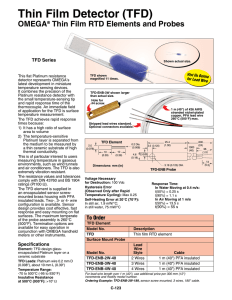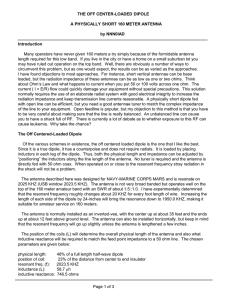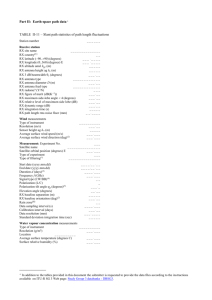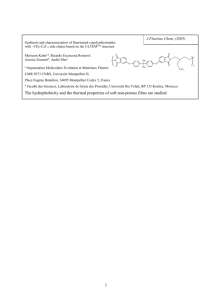TFD Terminated Folded Dipole ( T2FD )
advertisement
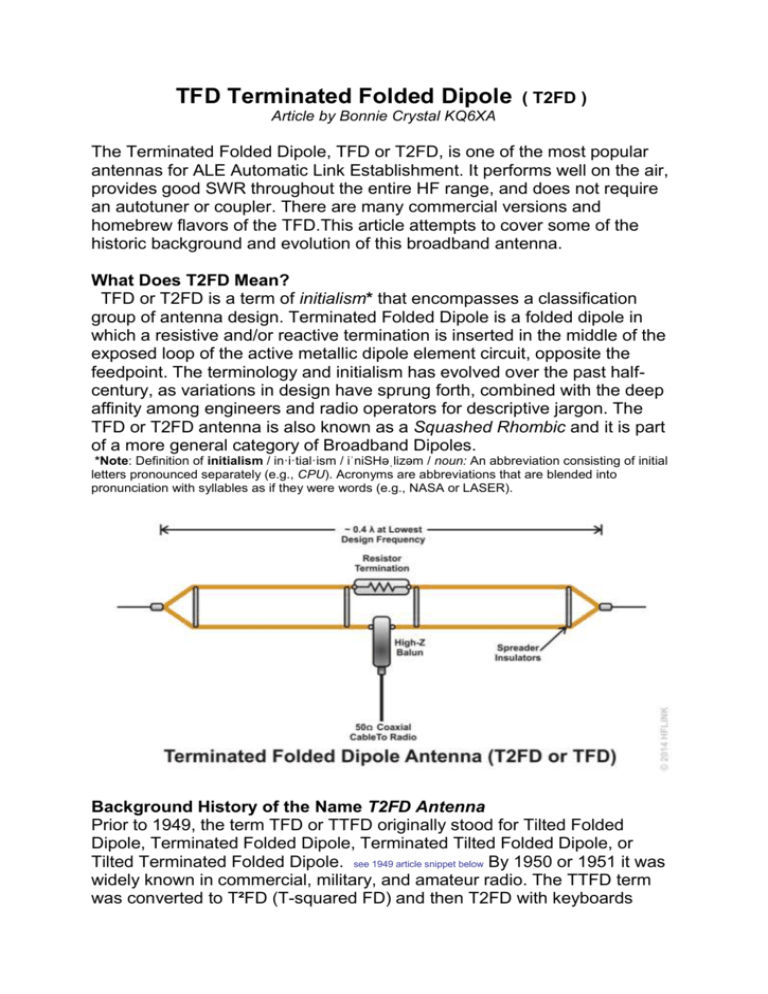
TFD Terminated Folded Dipole ( T2FD ) Article by Bonnie Crystal KQ6XA The Terminated Folded Dipole, TFD or T2FD, is one of the most popular antennas for ALE Automatic Link Establishment. It performs well on the air, provides good SWR throughout the entire HF range, and does not require an autotuner or coupler. There are many commercial versions and homebrew flavors of the TFD.This article attempts to cover some of the historic background and evolution of this broadband antenna. What Does T2FD Mean? TFD or T2FD is a term of initialism* that encompasses a classification group of antenna design. Terminated Folded Dipole is a folded dipole in which a resistive and/or reactive termination is inserted in the middle of the exposed loop of the active metallic dipole element circuit, opposite the feedpoint. The terminology and initialism has evolved over the past halfcentury, as variations in design have sprung forth, combined with the deep affinity among engineers and radio operators for descriptive jargon. The TFD or T2FD antenna is also known as a Squashed Rhombic and it is part of a more general category of Broadband Dipoles. *Note: Definition of initialism / in·i·tial·ism / iˈniSHəˌlizəm / noun: An abbreviation consisting of initial letters pronounced separately (e.g., CPU). Acronyms are abbreviations that are blended into pronunciation with syllables as if they were words (e.g., NASA or LASER). Background History of the Name T2FD Antenna Prior to 1949, the term TFD or TTFD originally stood for Tilted Folded Dipole, Terminated Folded Dipole, Terminated Tilted Folded Dipole, or Tilted Terminated Folded Dipole. see 1949 article snippet below By 1950 or 1951 it was widely known in commercial, military, and amateur radio. The TTFD term was converted to T²FD (T-squared FD) and then T2FD with keyboards lacking superscript (the superscript 2became a numerical figure 2). Insertion of other higher numerical integers (example: T3FD for a Terminated 3-wire Folded Dipole) into the initialism evolved much later, circa 1985 to 1990, as a shorthand for the number of half-wave elements connected in the active circuit of the dipole. Multi-wire TFDs became popular as they were found to have reduced termination losses, wider bandwidth, and higher radiation efficiency. T3FD, T4FD, etc. To Tilt or Not to Tilt? The recommended tilt or sloping dipole configuration in the T2FD original design articles purportedly achieved a particular beneficial radiation directional pattern for the application or location in which the antenna was developed, and this was widely carried over by other early experimenters. The tilt was later found to be completely superfluous to basic TFD design and performance. The essence of the TFD antenna electrical structure can be applied to most all of the various orientation configurations of normal dipoles. It has a radiation pattern identical to a normal dipole of similar size. Tilt or slope is not necessary to the performance of the TFD. Tilt was found to be undesirable for NVIS and omnidirectional applications. Design requirements calling for tilt configuration or sloped installations are less common in modern installations, while the more popular Inverted-V or flattop formats tend to be favored. Yet the Tilt still lives on in antenna mythology and superstition. Some have joked that the Tilt made it a more complex acronym while imbuing black magic... therefore adding perceived value. At this point, most will agree that the TFD reputation benefits from such perceived value mystique, while simultaneously acknowledging that it continues to have many detractors. Below, some of the original articles show how the early T2FD was introduced and started to gain popularity. Terminated Folded Monopole Antenna TFM T2FM T3FM The Terminated Folded Monopole (TFM) is a derivation of the TFD, and it is usually implemented as a vertical antenna over an RF ground plane or a radial system. Like the TFD, the TFM can be designed as a multi-wire or cage antenna. T2FM, T3FM, T4FM, T5FM, etc. The TFM has the same broadband qualities as the TFD, but offers a lower footprint configuration and more omnidirectional pattern for different applications. Article archive 1949: An Experimental All-Band Nondirectional Transmitting Antenna

